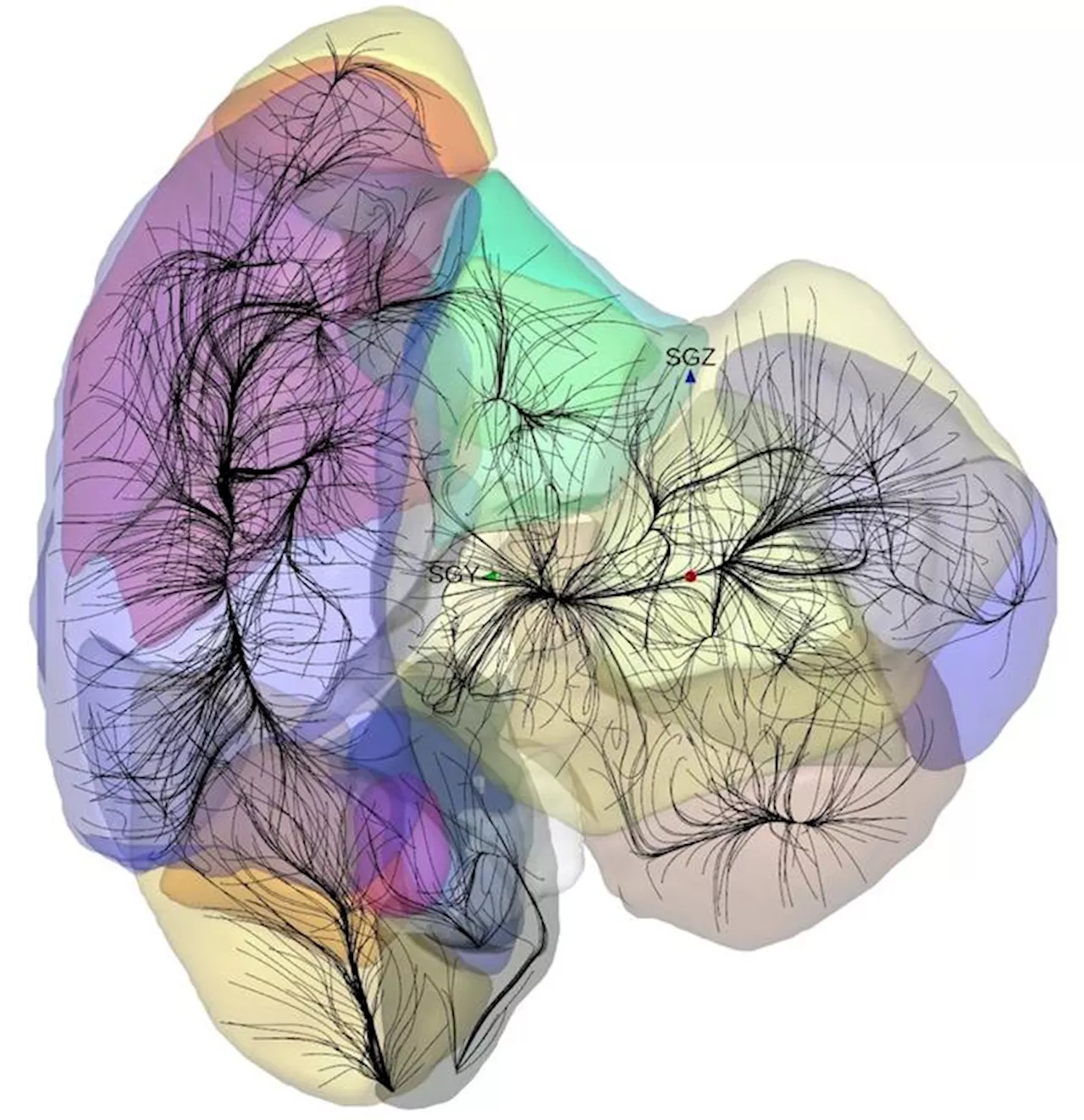Astronomers doing redshift surveys of galaxies and large-scale structure think our local neighborhood is part of the Shapley Concentration.
A data visualization of the motions of galaxies in structures called basins of attraction. The Milky Way is the red dot. Courtesy of the University of Hawai'i.
A slice of the Laniakea Supercluster, a local basin of attraction. This structure contains many galaxies and clusters, including our own Milky Way Galaxy. Credit: SDvision interactive visualization software by DP at CEA/Saclay, France. The Shapley Concentration was first observed by astronomer Harlow Shapley in the 1930s as a “cloud” in the constellation Centaurus. This supercluster appears along the direction of motion of the Local Group of galaxies . Because of that, scientists speculated that it could be influencing our galaxy’s peculiar motion. Interestingly, the Virgo Supercluster appears to be moving toward the Shapley Concentration.
United States Latest News, United States Headlines
Similar News:You can also read news stories similar to this one that we have collected from other news sources.
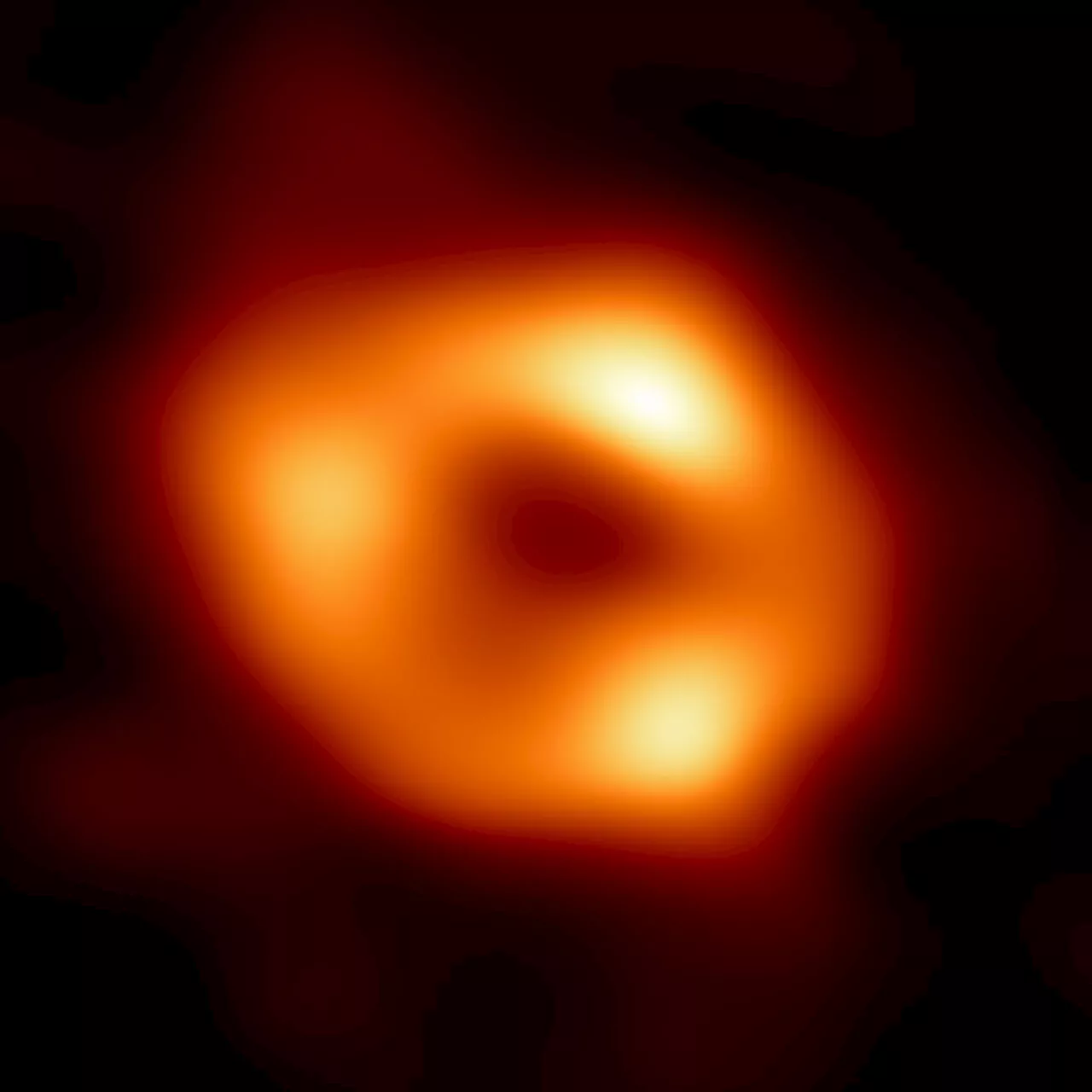 The Milky Way's Supermassive Black Hole Might Have Formed 9 Billion Years AgoSagittarius A-Star, the supermassive black hole at the center of the Milky Way, has some strange properties. Is it the result of a BH merger?
The Milky Way's Supermassive Black Hole Might Have Formed 9 Billion Years AgoSagittarius A-Star, the supermassive black hole at the center of the Milky Way, has some strange properties. Is it the result of a BH merger?
Read more »
 JWST Reveals Spectacular Star Formation in Milky Way's Extreme Outer GalaxyThe James Webb Space Telescope (JWST) has captured breathtaking images of star formation in Digel Cloud 2, a region located over 58,000 light-years away in the Milky Way's Extreme Outer Galaxy. The images reveal luminous main clusters full of bright young stars and active nebular structures.
JWST Reveals Spectacular Star Formation in Milky Way's Extreme Outer GalaxyThe James Webb Space Telescope (JWST) has captured breathtaking images of star formation in Digel Cloud 2, a region located over 58,000 light-years away in the Milky Way's Extreme Outer Galaxy. The images reveal luminous main clusters full of bright young stars and active nebular structures.
Read more »
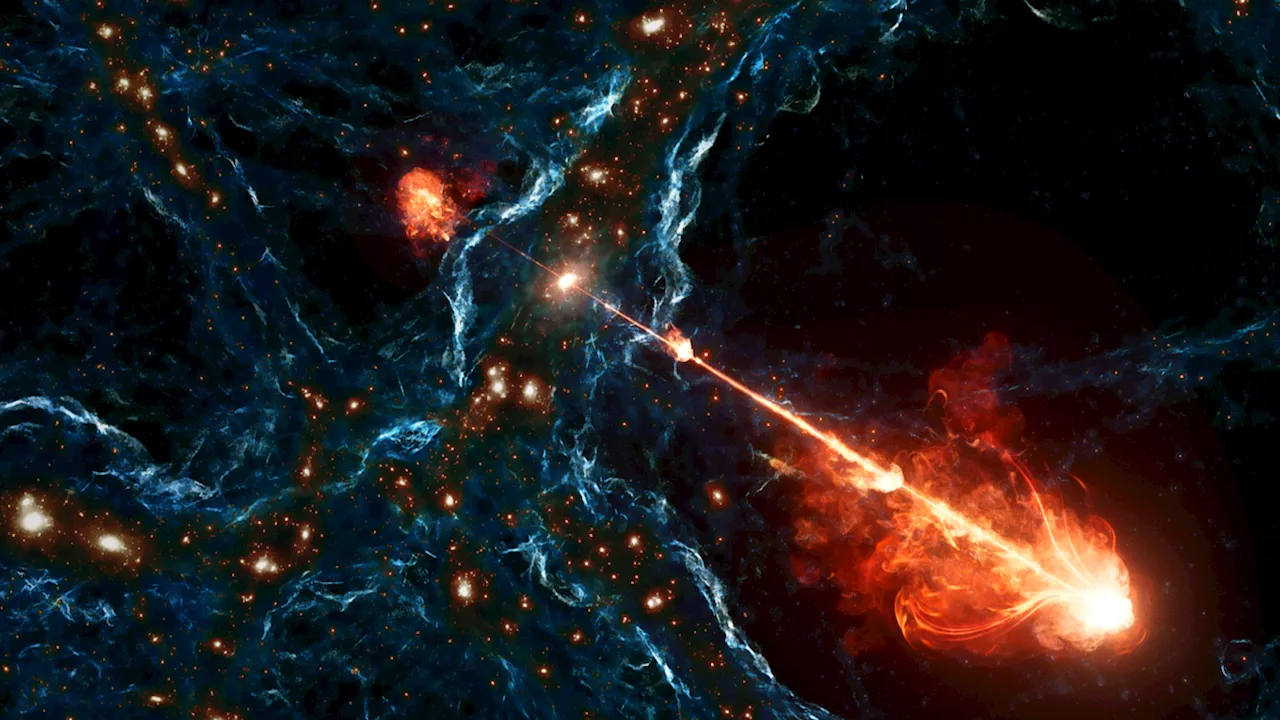 Biggest black hole jets ever seen are as long as 140 Milky WaysBen Turner is a U.K. based staff writer at Live Science. He covers physics and astronomy, among other topics like tech and climate change. He graduated from University College London with a degree in particle physics before training as a journalist.
Biggest black hole jets ever seen are as long as 140 Milky WaysBen Turner is a U.K. based staff writer at Live Science. He covers physics and astronomy, among other topics like tech and climate change. He graduated from University College London with a degree in particle physics before training as a journalist.
Read more »
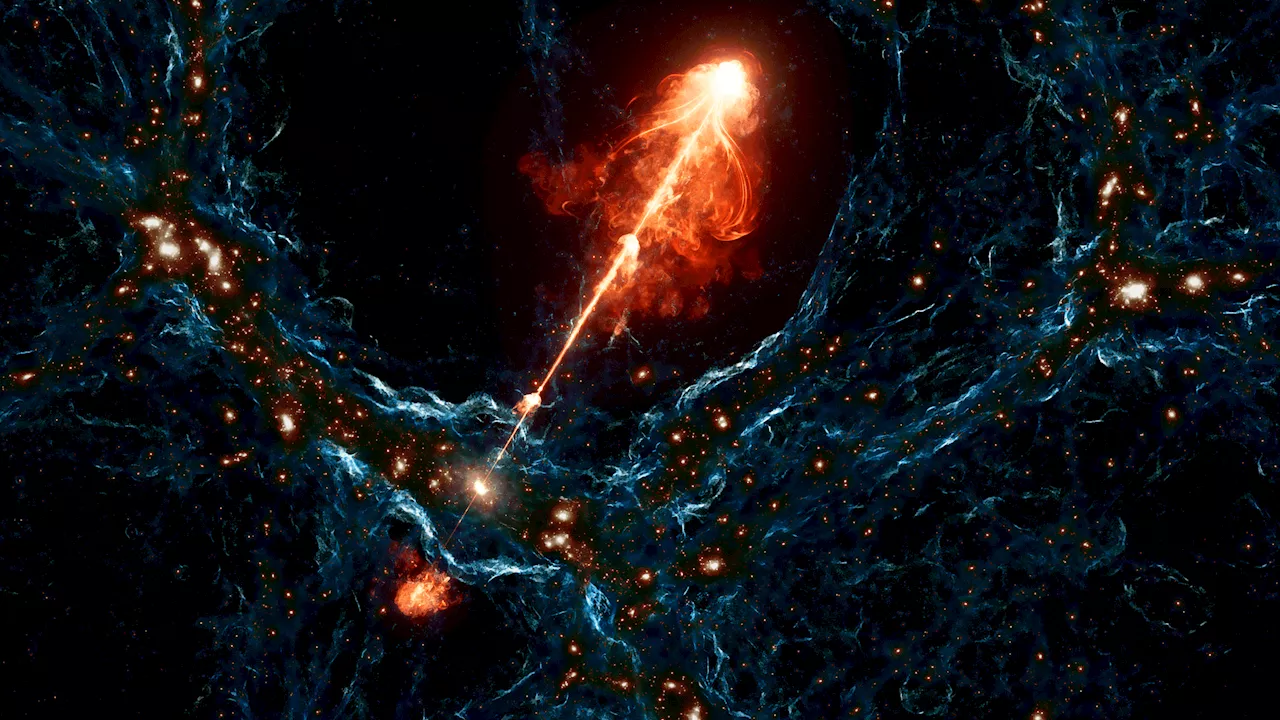 Biggest black hole jets ever seen span 140 Milky Way galaxiesAndrew Paul is Popular Science's staff writer covering tech news. Previously, he was a regular contributor to The A.V. Club and Input, and has had recent work featured by Rolling Stone, Fangoria, GQ, Slate, NBC, as well as McSweeney's Internet Tendency. He lives outside Indianapolis.
Biggest black hole jets ever seen span 140 Milky Way galaxiesAndrew Paul is Popular Science's staff writer covering tech news. Previously, he was a regular contributor to The A.V. Club and Input, and has had recent work featured by Rolling Stone, Fangoria, GQ, Slate, NBC, as well as McSweeney's Internet Tendency. He lives outside Indianapolis.
Read more »
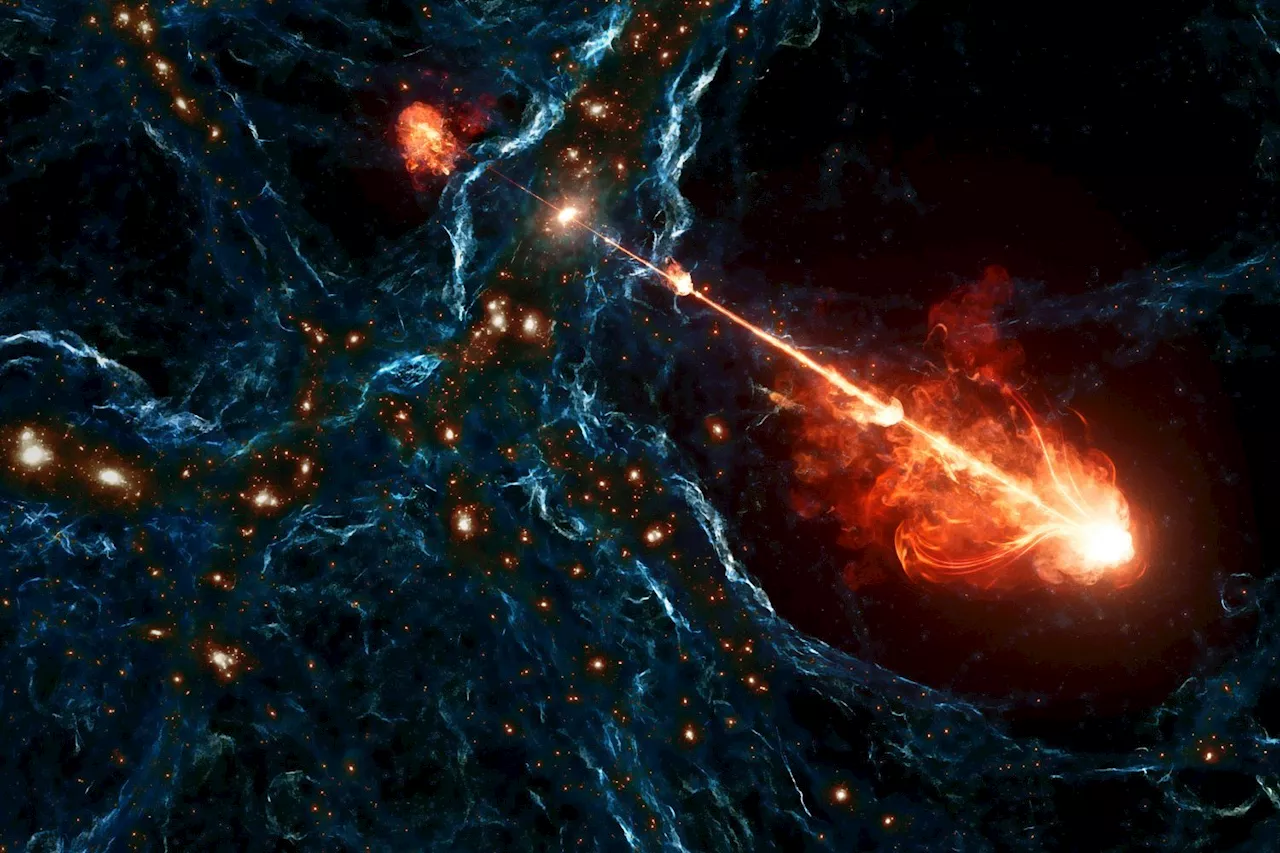 The Biggest Black Hole Jets Ever Seen Are 140 Milky Ways LongAstrophysicists are calling the gargantuan megastructure 'Porphyrion,' after a mythological Greek giant.
The Biggest Black Hole Jets Ever Seen Are 140 Milky Ways LongAstrophysicists are calling the gargantuan megastructure 'Porphyrion,' after a mythological Greek giant.
Read more »
 Entire Swarm of Black Holes Detected Moving Through The Milky WayThe Best in Science News and Amazing Breakthroughs
Entire Swarm of Black Holes Detected Moving Through The Milky WayThe Best in Science News and Amazing Breakthroughs
Read more »
